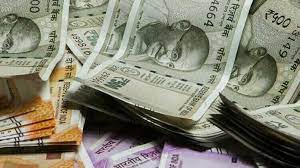MUMBAI (Reuters): The Indian rupee declined on Friday, but performed better than the other Asian currencies, thanks to persistent foreign inflows into domestic equities, traders said.
The rupee was at 82.0250 to the U.S. dollar by 11:28 a.m. IST, down from 81.95 in the previous session. The losses in the domestic unit paled in comparison to its Asian peers.
The Korean won was down 0.7%, the offshore Chinese declined to a new year-to-date low and the Indonesian rupiah and the Malaysian ringgit were both down 0.4%.
“Similar to how it has played out most of this week, rupee is an outperformer in the Asia space,” a forex sales person at a private bank said.
“Equity flows and lack of speculative interest in the face of low volatility, I assume, are the main reasons for this.”
Foreign investors have poured $2.5 billion into Indian equities in the last seven sessions, according to data from NSDL. Due to this, the BSE Sensex reached a record high this week.
Worries over China’s faltering post-pandemic recovery and hawkish central banks weighed on Asia equities and currencies.
The Bank of England on Thursday raised rates by a bigger-than-expected half a percentage point to rein in inflation that is the highest among major economies.
Norway’s central bank, too, raised its key policy rate by 50 basis points, a larger-than-expected increase. Meanwhile, U.S. Federal Reserve Chair Jerome Powell reiterated that more rate hikes were needed to tame sticky inflation.
The dollar index climbed to 102.66, helped by the weak risk appetite.
Bigger-than-expected tightening across European central banks is affecting global growth outlook and this could trigger a safe-haven move back into the dollar, Ed Moya, senior market analyst at broker OANDA said.







